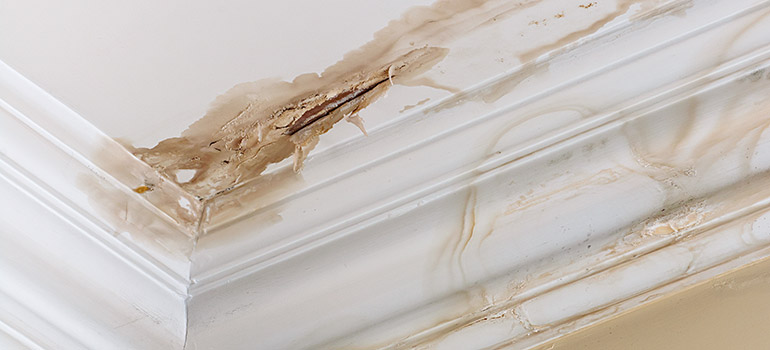Do's & Don'ts of Water Restoration.
Do's & Don'ts of Water Restoration.
Blog Article
We have noticed this article about Fire And Water Damage Prevention down the page on the web and decided it made perfect sense to relate it with you on this site.

Water provides life, water invasion on parts where it's not meant to be can result in damages. It can peel off away surface areas and wear down the foundation if the water soaks right into your structure. Mold as well as mold additionally thrive in a damp setting, which can be dangerous for your health. Homes with water damage smell musty as well as old.
Water can originate from many resources such as typhoons, floodings, ruptured pipes, leakages, as well as sewer issues. In case you experience water damage, it would be good to recognize some safety precautions. Below are a couple of guidelines on exactly how to manage water damages.
Do Prioritize House Insurance Coverage
Water damage from flooding because of heavy winds is seasonal. You can also experience a sudden flooding when a damaged pipe unexpectedly bursts right into your residence. It would certainly be best to have home insurance policy that covers both disasters such as natural disasters, and emergencies like broken plumbing.
Don't Forget to Switch Off Utilities
In case of a catastrophe, specifically if you stay in a flood-prone location, it would certainly be a good idea to shut off the major electric circuit. This removes power to your whole home, stopping electric shocks when water comes in as it is a conductor. Additionally, do not forget to shut off the major water line shutoff. When floodwaters are high, furniture will walk around and also create damage. Having the primary valve shut down stops further damages.
Do Keep Proactive and Heed Climate Signals
Listen to evacuation cautions if you live near a lake, creek, or river . Doing so minimizes potential home damage.
Do Not Neglect the Roof
You can stay clear of rain damages if there are no openings as well as leakages in your roofing system. This will certainly avoid water from streaming down your walls and saturating your ceiling.
Do Take Note Of Small Leaks
A burst pipeline does not happen overnight. Normally, there are red flags that indicate you have weakened pipelines in your home. As an example, you might notice gurgling paint, peeling wallpaper, water streaks, water stains, or dripping audios behind the walls. Eventually, this pipe will certainly rupture. Preferably, you ought to not await things to rise. Have your plumbing repaired before it leads to massive damage.
Do Not Panic in Case of a Ruptured Pipe
When it comes to water damage, timing is key. Therefore, if a pipe ruptureds in your house, promptly shut off your primary water valve to cut off the resource. Call a reputable water damage remediation professional for support.
Water gives life, water intrusion on parts where it's not meant to be can result in damages. Homes with water damage smell old as well as mildewy.
Water damage from flood dues to heavy winds is seasonal. You might observe bubbling paint, peeling wallpaper, water streaks, water spots, or trickling audios behind the walls. When it comes to water damage, timing is key.
Some Do's & Don't When Dealing with a Water Damage
DO:
Make sure the water source has been eliminated. Contact a plumber if needed. Turn off circuit breakers supplying electricity to wet areas and unplug any electronics that are on wet carpet or surfaces Remove small furniture items Remove as much excess water as possible by mopping or blotting; Use WHITE towels to blot wet carpeting Wipe water from wooden furniture after removing anything on it Remove and prop up wet upholstery cushions for even drying (check for any bleeding) Pin up curtains or furniture skirts if needed Place aluminum foil, saucers or wood blocks between furniture legs and wet carpet Turn on air conditioning for maximum drying in winter and open windows in the summer Open any drawers and cabinets affected for complete drying but do not force them open Remove any valuable art objects or paintings to a safe, dry place Open any suitcases or luggage that may have been affected to dry, preferably in sunlight Hang any fur or leather goods to dry at room temperature Punch small holes in sagging ceilings to relieve trapped water (don't forget to place pans beneath!); however, if the ceiling is sagging extremely low, stay out of the room and we'll take care of it DO NOT:
Leave wet fabrics in place; dry them as soon as possible Leave books, magazines or any other colored items on wet carpets or floor Use your household vacuum to remove water Use TV's or other electronics/appliances while standing on wet carpets or floors; especially not on wet concrete floors Turn on ceiling fixtures if the ceiling is wet Turn your heat up, unless instructed otherwise

Hopefully you liked our part about Fire And Water Damage Prevention. Thanks for finding the time to browse our content. Enjoyed reading our blog entry? Please share it. Let other people check it out. Thanks a lot for going through it.
Report this page